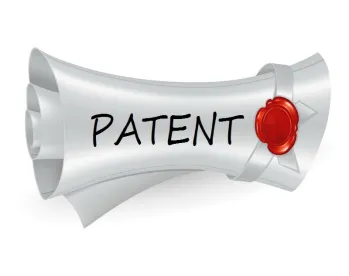In earlier blogs, we discussed when to amend and when not to amend claims in an inter partes review (“IPR”) pursuant to 35 U.S.C. § 316(d)(1). Below are guidelines on the procedural aspects of filing a motion to amend claims.
Motions to amend must meet the statutory and regulatory requirements set forth in 35 U.S.C. § 316(d) and 37 C.F.R. § 42.121. Pursuant to these requirements, a motion to amend may cancel any challenged patent claim and propose a reasonable number of substitute claims. A presumption lies that only one substitute claim is needed to replace each challenged claim. Importantly, any motion to amend that includes claims that broaden the scope of the patent claims or introduces new matter will be denied. The motion must also provide written description support for the substitute claims throughout the chain of specifications, including in the original disclosure of the patent. Patent owners should also offer proposed constructions for new claim terms. Patent owners may optionally offer arguments in support of patentability for any proposed substitute claim, and technical expert testimony in support of those arguments. Generally, motions to amend claims are almost always filed on a contingent basis – to be considered only in the event that the Board finds the patent invalid.
Since October 2017, petitioners bear the burden of persuasion regarding unpatentability of substitute claims — patent owner does not have to prove anything. The Board may also justify a finding of unpatentability based on any evidence of record. Ultimately, the Board determines whether the substitute claims are unpatentable by a preponderance of the evidence-based on the entirety of the record, including any opposition made by petitioner. Where the evidence is equally balanced in favor of and against allowing the motion, the Board should grant the motion. PTAB Consolidated Trial Practice Guide, Nov. 2019 at 68.
Generally, all motions must be filed with adequate notice provide to the Board. While patent owners filing their first motion to amend need not obtain prior authorization, they must confer with the Board before filing the motion. Patent owners are also encouraged to contact the Board as early as possible after deciding to file a motion to amend such that the Board may provide procedural guidance regarding the motion.
The PTAB recently instituted a pilot program for motions to amend, which can be a useful tool for patent owners, and should be considered when filing such motions. The pilot program provides patent owners with two options: (1) requesting preliminary guidance from the Board on its first motion to amend, and (2) filing a revised motion to amend. Patent owners that do not participate in the program follow the same trial procedure as before. The first option allows patent owner to request preliminary guidance from the Board after petitioner files an opposition (or the date thereof). The preliminary guidance is non-binding, and typically in the form of a short paper, but it could be provided orally during a conference call. The guidance focuses only on the new substitute claims, and provides insight as to whether there is a reasonable likelihood that the motion meets statutory and regulatory requirements, and whether petitioner (or the evidentiary record) has established a reasonable likelihood that the substitute claims are unpatentable.
The second option allows patent owner, after receiving petitioner’s opposition and/or the Board’s preliminary guidance (if requested), to submit a revised motion. The revised motion will include one or more newly proposed substitute claims, and may include prior claims, arguments, or evidence previously presented, in addition to new arguments and/or evidence directed to the statutory and regulatory requirements and the patentability of the pending substitute claims. The revised motion is limited to addressing the issues raised in the preliminary guidance and/or petitioner’s opposition.
After petitioner is afforded an opportunity to address any revised motion, patent owner may file a reply, and petitioner may file a corresponding sur-reply. The Board will issue a new scheduling order soon after patent owner files a revised motion to accommodate the necessary additional briefing. Generally, petitioner’s sur-reply relating to the revised motion is due 1 week before the oral hearing, and the oral hearing takes place about 9 weeks before the 12-month statutory deadline for a final written decision.
Motions to amend can be a powerful tool to support the livelihood of a patent, especially now that the overall success rate is increasing, likely due to the 2017 clarification that the burden[CP1] of unpatentability rested on petitioner. This success rate may increase even further given the new pilot program. At the February 2021 meeting of USPTO’s Patent Public Advisory Committee, PTAB Deputy Chief Judge Jacqueline Bonilla provided that the overall chances of a motion to amend being granted have doubled since the start of the pilot program, and for participating patent owners, motions have been granted or granted-in-part about 36% of the time, whereas patent owners who did not participate had a success rate of only about 9%.[1] Thus, when a patent owner is considering how to best navigate the troubled IPR waters, consideration of how motions to amend fit into the overall strategy, including the use of the pilot program, is necessary.
[1] https://www.uspto.gov/sites/default/files/documents/PPAC_Transcript_20210211.pdf





 />i
/>i
